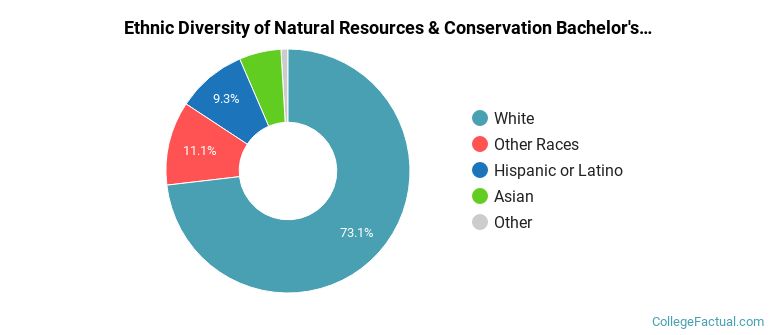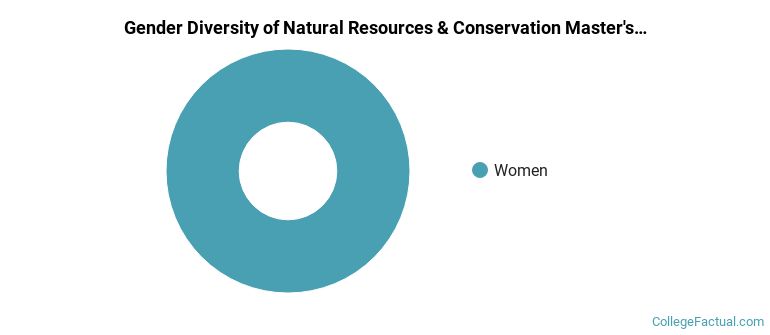 by our College Data Analytics Team
by our College Data Analytics TeamGo directly to any of the following sections:
UO was ranked #33 on College Factual's most recent list of the best schools for natural resources & conservation majors. This puts the bachelor's program at the school solidly in the top 15% of all colleges and universities in the country. It is also ranked #1 in Oregon.
| Ranking Type | Rank |
|---|---|
| Best Natural Resources & Conservation Schools | 33 |
| Best Natural Resources & Conservation Bachelor’s Degree Schools | 37 |
During the 2021-2022 academic year, University of Oregon handed out 108 bachelor's degrees in natural resources & conservation. This is an increase of 19% over the previous year when 91 degrees were handed out.
In 2022, 6 students received their master’s degree in natural resources & conservation from UO. This makes it the #155 most popular school for natural resources & conservation master’s degree candidates in the country.
In addition, 1 students received their doctoral degrees in natural resources & conservation in 2022, making the school the #87 most popular school in the United States for this category of students.
During the 2022-2023 academic year, part-time undergraduate students at UO paid an average of $860 per credit hour if they came to the school from out-of-state. In-state students paid a discounted rate of $272 per credit hour. Information about average full-time undergraduate tuition and fees is shown in the table below.
| In State | Out of State | |
|---|---|---|
| Tuition | $12,240 | $38,683 |
| Fees | $2,511 | $2,511 |
| Books and Supplies | $1,320 | $1,320 |
| On Campus Room and Board | $15,840 | $15,840 |
| On Campus Other Expenses | $2,892 | $2,892 |
Learn more about UO tuition and fees.
The natural resources & conservation program at UO awarded 108 bachelor's degrees in 2021-2022. About 31% of these degrees went to men with the other 69% going to women.

The majority of bachelor's degree recipients in this major at UO are white. In the most recent graduating class for which data is available, 73% of students fell into this category.
The following table and chart show the ethnic background for students who recently graduated from University of Oregon with a bachelor's in natural resources & conservation.

| Ethnic Background | Number of Students |
|---|---|
| Asian | 6 |
| Black or African American | 0 |
| Hispanic or Latino | 10 |
| White | 79 |
| Non-Resident Aliens | 1 |
| Other Races | 12 |
UO does not offer an online option for its natural resources & conservation bachelor’s degree program at this time. To see if the school offers distance learning options in other areas, visit the UO Online Learning page.
All of the 7 students who graduated with a Master’s in natural resources & conservation from UO in 2022 were women.

The following table and chart show the ethnic background for students who recently graduated from University of Oregon with a master's in natural resources & conservation.

| Ethnic Background | Number of Students |
|---|---|
| Asian | 0 |
| Black or African American | 2 |
| Hispanic or Latino | 2 |
| White | 3 |
| Non-Resident Aliens | 0 |
| Other Races | 0 |
Take a look at the following statistics related to the make-up of the natural resources & conservation majors at University of Oregon.
Natural Resources & Conservation students may decide to major in one of the following focus areas. Individual majors may not be available for all degree levels.
| Major | Annual Graduates |
|---|---|
| Natural Resources Conservation | 120 |
| Related Major | Annual Graduates |
|---|---|
| Biological & Biomedical Sciences | 386 |
| Architecture & Related Services | 166 |
| Physical Sciences | 162 |
| Mathematics & Statistics | 92 |
| Engineering | 56 |
More about our data sources and methodologies.